A Study of the Particle-Level Fabric and Morphology of Granular Soils under One-Dimensional Compression Using Insitu X-ray CT Imaging
Abstract
:1. Introduction
2. Materials and In Situ Imaging
3. Post-Processing of Images
4. Particle-Level Fabric Analysis
4.1. Separation of Particles
4.2. Morphology of Particles
4.3. Coordination Number, Branch and Contact Normal Vectors
4.4. Fabric Tensors and Distribution Densities
4.5. Crushability of Particles from Contact Normal Vectors
5. Results and Discussion
5.1. Particle Size Distributions and Morphological Parameters
5.2. Particle Long-Axis Orientations
5.3. Particle Coordination Numbers
5.4. Branch and Contact Normal Vectors
5.5. Effect of DDR on the Crushing Potential of Particles
6. Conclusions
- The MPSM was capable of separating the granular particles subjected to high stress levels, whereas the routine marker-controlled watershed method failed to produce the maximum separation outcomes. The particle size distributions showed no/insignificant damaged particles in the pre-crushing stress range (<16 MPa) whereas major damage including splitting was noticed in the post-crushing stress range (≥16 MPa).
- The proposed resampling of image data for the smaller-sized particles, whose voxel centroids might lie on a single line or a plane, was found to produce meaningful sphericity values (≤1), which otherwise been ignored for morphological analysis. In general, the morphological parameters (sphericity and convexity) showed significant changes in the post-crushing stress-range due to the creation of smaller-sized particles of smaller sphericity and convexity values. The median values of the convexity and sphericity were observed to decrease with the increase of vertical stresses. This study found a linear relationship between the convexity and sphericity values.
- A comprehensive algorithm for determining the coordination number, branch and contact normal vectors of particles was developed. This study found a dominant horizontally biased orientation of particles’ long-axes up to 32 MPa, thereafter a vertical bias appeared at 64 MPa as a result of many nearly vertical splitting of particles. In general, the coordination number was found to increase with the increase of particle size and applied stress. A good correlation between the void ratio and the average coordination number was observed.
- The micromechanics of particle crushing was described by combining the variations of coordination number with particle size distributions at various stresses, where an increase of coordination number for particles ≥240 µm was observed due to the additional support provided by the newly created particles as a result of crushing. The crushing potential of particles was explained with the help of coordination number, particle size and position relative to loading piston.
- The evolution of branch vectors under one-dimensional compression was found to be nearly isotropic with a gradual decrease of length in the post-crushing stress range (≥16 MPa). A strong correlation was evident between average branch vector length and void ratio, and mean diameter of particles. The contact normal vectors, on the other hand, showed significant horizontal and vertical biases at all stress levels investigated. Analysis of 1st kind-rank 2 fabric tensors showed a significant shift of the orientation of contact normal vectors from the horizontal at no-load to nearly vertical (i.e., formation of load columns) up to 32 MPa, thereafter again horizontal bias at 64 MPa.
- This study reports an innovative way of assessing the crushing potential of a particle by determining the distribution density of contact normal vectors around that particle. In general, prior to crushing, the distribution densities were predominantly vertically biased for crushed particles with distribution density ratios exceeding unity.
Author Contributions
Funding
Acknowledgments
Conflicts of Interest
References
- Mitchell, J.K.; Soga, K. Fundamentals of Soil Behavior, 3rd ed.; John Wiley & Sons, Inc.: Hoboken, NJ, USA, 2005; ISBN 978-0-471-46302-3. [Google Scholar]
- Brewer, R. Fabric and Mineral Analysis of Soils; John Wiley & Sons, Inc.: New York, NY, USA, 1964; pp. 129–158. [Google Scholar]
- Arthur, J.R.; Menzies, B.K. Inherent anisotropy in a sand. Géotechnique 1972, 22, 115–128. [Google Scholar] [CrossRef]
- Oda, M. Initial fabrics and their relations to mechanical properties of granular material. Soils Found. 1972, 12, 17–35. [Google Scholar] [CrossRef]
- Oda, M. The mechanism of fabric changes during compressional deformation of sand. Soils Found. 1972, 12, 1–18. [Google Scholar] [CrossRef]
- Oda, M. Deformation mechanism of sand in triaxial compression tests. Soils Found. 1972, 12, 45–63. [Google Scholar] [CrossRef]
- Oda, M. Stress-induced anisotropy in granular masses. Soils Found. 1985, 25, 85–97. [Google Scholar] [CrossRef]
- Fonseca, J.; O’Sullivan, C.; Coop, M.R.; Lee, P.D. Quantifying the evolution of soil fabric during shearing using directional parameters. Géotechnique 2013, 63, 487–499. [Google Scholar] [CrossRef]
- Druckrey, A.M.; Alshibli, K.A.; Al-Raoush, R.I. 3D characterization of sand particle-to-particle contact and morphology. Comput. Geotech. 2016, 74, 26–35. [Google Scholar] [CrossRef]
- Imseeh, W.H.; Druckrey, A.M.; Alshibli, K.A. 3D experimental quantification of fabric and fabric evolution of sheared granular materials using synchrotron micro-computed tomography. Granul. Matter 2018, 20, 24. [Google Scholar] [CrossRef]
- Oda, M. Co-ordination number and its relation to shear strength of granular material. Soils Found. 1977, 17, 29–42. [Google Scholar] [CrossRef]
- Hasan, A.; Alshibli, K.A. Experimental assessment of 3D particle-to-particle interaction within sheared sand using synchrotron microtomography. Géotechnique 2010, 60, 369–379. [Google Scholar] [CrossRef]
- Fonseca, J.; O’Sullivan, C.; Coop, M.R.; Lee, P.D. Quantifying the evolution of soil fabric during shearing using scalar parameters. Géotechnique 2013, 63, 818–829. [Google Scholar] [CrossRef]
- Desrues, J.; Chambon, R.; Mokni, M.; Mazerolle, F. Void ratio evolution inside shear bands in triaxial sand specimens studied by computed tomography. Géotechnique 1996, 46, 529–546. [Google Scholar] [CrossRef]
- Alshibli, K.A.; Hasan, A. Spatial variation of void ratio and shear band thickness in sand using X-ray computed tomography. Géotechnique 2008, 58, 249–257. [Google Scholar] [CrossRef]
- Cho, G.-C.; Dodds, J.; Santamarina, J.C. Particle shape effects on packing density, stiffness, and strength: Natural and crushed sands. J. Geotech. Geoenviron. Eng. 2006, 132, 591–602. [Google Scholar] [CrossRef]
- Alshibli, K.A.; Druckrey, A.M.; Al-Raoush, R.I.; Weiskittel, T.; Lavrik, N.V. Quantifying morphology of sands using 3D imaging. J. Mater. Civ. Eng. 2015, 27, 04014275. [Google Scholar] [CrossRef]
- Alshibli, K.A.; Jarrar, M.F.; Druckrey, A.M.; Al-Raoush, R.I. Influence of particle morphology on 3D kinematic behavior and strain localization of sheared sand. J. Geotech. Geoenviron. Eng. 2017, 143, 04016097. [Google Scholar] [CrossRef]
- Murphy, D.J. Stress, degradation, and shear strength of granular material. In Geotechnical Modeling and Applications; Sayed, S.M., Ed.; Gulf Publishing Co.: Houston, TX, USA, 1987; pp. 181–211. ISBN 0872017877. [Google Scholar]
- Yamamuro, J.A.; Bopp, P.A.; Lade, P.V. One-dimensional compression of sands at high pressures. J. Geotech. Eng. 1996, 122, 147–154. [Google Scholar] [CrossRef]
- Lade, P.V.; Yamamuro, J.A.; Bopp, P.A. Significance of particle crushing in granular materials. J. Geotech. Eng. 1996, 122, 309–316. [Google Scholar] [CrossRef]
- Miura, N. Point Resistance of Piles in Sand. In Proceedings of the Eleventh International Conference on Soil Mechanics and Foundation Engineering (ICSMFE); San Francisco, CA, USA, 12–16 August 1985, Balkema: Rotterdam, The Netherlands, 1985; pp. 1445–1448. [Google Scholar]
- Nakata, Y.; Hyodo, M.; Hyde, A.; Kato, Y.; Murata, H. Microscopic particle crushing of sand subjected to high pressure one dimensional compression. Soils Found. 2001, 41, 69–82. [Google Scholar] [CrossRef]
- Takei, M.; Kusakabe, O.; Hayashi, T. Time-dependent behavior of crushable materials in one-dimensional compression tests. Soils Found. 2001, 41, 97–121. [Google Scholar] [CrossRef]
- Altuhafi, F.N.; Coop, M.R. Changes to particle characteristics associated with the compression of sands. Géotechnique 2011, 61, 459–471. [Google Scholar] [CrossRef]
- Cil, M.B.; Alshibli, K.A. 3D evolution of sand fracture under 1D compression. Géotechnique 2014, 64, 351–364. [Google Scholar] [CrossRef]
- Terzaghi, K.; Peck, R.B. Soil Mechanics in Engineering Practice; John Wiley & Sons, Inc.: New York, NY, USA, 1948. [Google Scholar]
- De Souza, J.M. Compressibility of Quartz Sand at High Pressure. Master’s Thesis, Massachusetts Institute of Technology, Cambridge, MA, USA, 1958; pp. 63–64. [Google Scholar]
- Lee, D.-M. The Angles of Friction of Granular Fills. Ph.D. Thesis, University of Cambridge, Cambridge, UK, 1992. Available online: https://www.repository.cam.ac.uk/handle/1810/252312 (accessed on 1 May 2018).
- McDowell, G.R.; Bolton, M.D. On the micromechanics of crushable aggregates. Géotechnique 1998, 48, 667–679. [Google Scholar] [CrossRef]
- Coop, M.R.; Lee, I.K. The Behaviour of Granular Soils at Elevated Stresses. In Predictive Soil Mechanics, Proceedings of the Wroth Memorial Symposium, Oxford, UK, 1993; Houlsby, G.T., Schofield, A.N., Eds.; Thomas Telford: London, UK, 1993; pp. 186–198. Available online: https://www-icevirtuallibrary-com.ezproxy.lib.monash.edu.au/doi/full/10.1680/psm.19164.0012 (accessed on 2 March 2018).
- Kang, X.; Bate, B. Shear wave velocity and its anisotropy of polymer modified high-volume class-F fly ash–kaolinite mixtures. J. Geotech. Geoenviron. Eng. 2016, 142, 04016068. [Google Scholar] [CrossRef]
- Wang, Y.H.; Mok, C.B. Mechanisms of small strain shear-modulus anisotropy in soils. J. Geotech. Geoenviron. Eng. 2008, 134, 1516–1530. [Google Scholar] [CrossRef]
- Alam, M.F.; Haque, A. A new cluster analysis-marker-controlled watershed method for separating particles of granular soils. Materials 2017, 10, 1195. [Google Scholar] [CrossRef] [PubMed]
- Zhao, B.; Wang, J.; Coop, M.R.; Viggiani, G.; Jiang, M. An investigation of single sand particle fracture using X-ray micro-tomography. Géotechnique 2015, 65, 625–641. [Google Scholar] [CrossRef]
- Fonseca, J.; O’Sullivan, C.; Coop, M.R.; Lee, P.D. Non-invasive characterization of particle morphology of natural sands. Soils Found. 2012, 52, 712–722. [Google Scholar] [CrossRef]
- Kenley, P.R. Brighton Group-Geology. In Engineering Geology of Melbourne, Proceedings of the Seminar on Engineering Geology of Melbourne, Melbourne, Victoria, Australia, 16 September 1992; Peck, W.A., Neilson, J.L., Olds, R.J., Seddon, K.D., Eds.; Balkema: Rotterdam, The Netherlands, 1992; pp. 191–196. ISBN 90-5410-0834. [Google Scholar]
- Chandler, K.R. Brighton Group-Engineering Properties. In Engineering Geology of Melbourne, Proceedings of the Seminar on Engineering Geology of Melbourne, Melbourne, Victoria, Australia, 16 September 1992; Peck, W.A., Neilson, J.L., Olds, R.J., Seddon, K.D., Eds.; Balkema: Rotterdam, The Netherlands, 1992; pp. 197–203. ISBN 90-5410-0834. [Google Scholar]
- AS 1152-1993. Specification for Test Sieves; Standards Australia. 1993. Available online: https://www-saiglobal-com.ezproxy.lib.monash.edu.au/PDFTemp/osu-2018-02-12/7658163008/1152.PDF (accessed on 12 February 2018).
- Quantachrome Instruments. Multipycnometer; Quantachrome Instruments: Boynton Beach, FL, USA, 2011. [Google Scholar]
- Deben UK Ltd. CT5000; Deben UK Ltd.: Suffolk, UK, 2013. [Google Scholar]
- Deben UK Ltd. MICROTEST (V6.13); Deben UK Ltd.: Suffolk, UK, 2013. [Google Scholar]
- AS 1289.6.6.1-1998. Determination of the One-Dimensional Consolidation Properties of a Soil-Standard Method; Standards Australia. 1998. Available online: https://www-saiglobal-com.ezproxy.lib.monash.edu.au/online/Script/OpenDoc.asp?name=AS+1289%2E6%2E6%2E1%2D1998&path=https%3A%2F%2Fwww%2Esaiglobal%2Ecom%2FPDFTemp%2Fosu%2D2017%2D03%2D01%2F9773910904%2Fs661%2Epdf&docn=stds000021517 (accessed on 1 March 2016).
- Al Mahbub, A.; Haque, A. X-ray computed tomography imaging of the microstructure of sand particles subjected to high pressure one-dimensional compression. Materials 2016, 9, 890. [Google Scholar] [CrossRef] [PubMed]
- Xradia. XMReconstructor-Cone Beam-10; Xradia: Pleasanton, CA, USA, 2011. [Google Scholar]
- FEI Visualizations Sciences Group. Avizo 9.1.1; FEI Visualizations Sciences Group: Hillsboro, OR, USA, 2016. [Google Scholar]
- Buades, A.; Coll, B.; Morel, J.-M. A Non-Local Algorithm for Image Denoising. In Proceedings of the IEEE Computer Society Conference on Computer Vision and Pattern Recognition (CVPR’05), San Diego, CA, USA, 20–25 June 2005. [Google Scholar] [CrossRef]
- Pun, T. Entropic thresholding, a new approach. Comput. Graph. Image Process. 1981, 16, 210–239. [Google Scholar] [CrossRef]
- Kapur, J.N.; Sahoo, P.K.; Wong, A. A new method for gray-level picture thresholding using the entropy of the histogram. Comput. Vis. Graph. Image Process. 1985, 29, 273–285. [Google Scholar] [CrossRef]
- Otsu, N. A thresholding selection method from grayscale histogram. IEEE Trans. Syst. Man Cybern. 1979, 9, 62–66. [Google Scholar] [CrossRef]
- Tsai, W.H. Moment-preserving thresholding: A new approach. Comput. Vis. Graph. Image Process 1985, 29, 377–393. [Google Scholar] [CrossRef]
- Meyer, F.; Beucher, S. Morphological segmentation. J. Vis. Commun. Image Represent. 1990, 1, 21–46. [Google Scholar] [CrossRef]
- Soille, P. Morphological Image Analysis: Principles and Applications, 2nd ed.; Corrected 2nd Printing; Springer: Berlin/Heidelberg, Germany, 2004; ISBN 978-3-642-07696-1. [Google Scholar]
- Caliński, T.; Harabasz, J. A dendrite method for cluster analysis. Commun. Stat. 1974, 3, 1–27. [Google Scholar] [CrossRef]
- MathWorks. MATLAB 2017b; MathWorks: Natick, MA, USA, 2017. [Google Scholar]
- Davies, D.L.; Bouldin, D.W. A cluster separation measure. IEEE Trans. Pattern Anal. Mach. Intell. 1979, 1, 224–227. [Google Scholar] [CrossRef] [PubMed]
- McLachlan, G.; Peel, D. Finite Mixture Models; John Wiley & Sons, Inc.: New York, NY, USA, 2000; ISBN1 0-471-00626-2. Available online: http://onlinelibrary.wiley.com.ezproxy.lib.monash.edu.au/book/10.1002/0471721182 (accessed on 19 June 2016)ISBN2 0-471-00626-2.
- Wadell, H. Volume, shape, and roundness of rock particles. J. Geol. 1932, 40, 443–451. [Google Scholar] [CrossRef]
- Barrett, P.J. The shape of rock particles, a critical review. Sedimentology 1980, 27, 291–303. [Google Scholar] [CrossRef]
- Hoppe, H.; DeRose, T.; Duchamp, T.; McDonald, J.; Stuetzle, W. Surface Reconstruction from Unorganized Points. In Proceedings of the SIGGRAPH’92, 19th Annual Conference on Computer Graphics and Interactive Techniques, Chicago, IL, USA, 27–31 July 1992; ACM: New York, NY, USA, 1992; pp. 71–78. [Google Scholar] [CrossRef]
- Shertzer, R.H. Fabric Tensors and Effective Properties of Granular Materials with Application to Snow. Ph.D. Thesis, Montana State University, Bozeman, MT, USA, 2011. Available online: http://scholarworks.montana.edu/xmlui/bitstream/handle/1/2264/ShertzerR0811.pdf?sequence=1&isAllowed=y (accessed on 12 October 2016).
- Kanatani, K.-I. Distribution of directional data and fabric tensors. Int. J. Eng. Sci. 1984, 22, 149–164. [Google Scholar] [CrossRef]
- Cundall, P.A.; Strack, O. A discrete numerical model for granular assemblies. Géotechnique 1979, 29, 47–65. [Google Scholar] [CrossRef]
- Muir Wood, D. Critical State and Soil Modelling. In Deformational Characteristics of Geomaterials, Proceedings of the Fourth International Symposium on Deformation Characteristics of Geomaterials, Atlanta, GA, USA, 22–24 September 2008; Burns, S.E., Mayne, P.W., Santamarina, J.C., Eds.; IOS Press: Amsterdam, The Netherlands, 2008; pp. 51–72. [Google Scholar]
- Hardin, B.O. Crushing of soil particles. J. Geotech. Eng. 1985, 111, 1177–1192. [Google Scholar] [CrossRef]
- Muir Wood, D. Geomaterials with Changing Grading: A Route towards Modelling. In Geomechanics and Geotechnics of Particulate Media, Proceedings of the International Symposium on Geomechanics and Geotechnics of Particulate Media, Ube, Japan, 12–14 September 2006; Hyodo, M., Murata, H., Nakata, Y., Eds.; CRC Press, Taylor & Francis Group: London, UK, 2006; pp. 313–325. [Google Scholar]
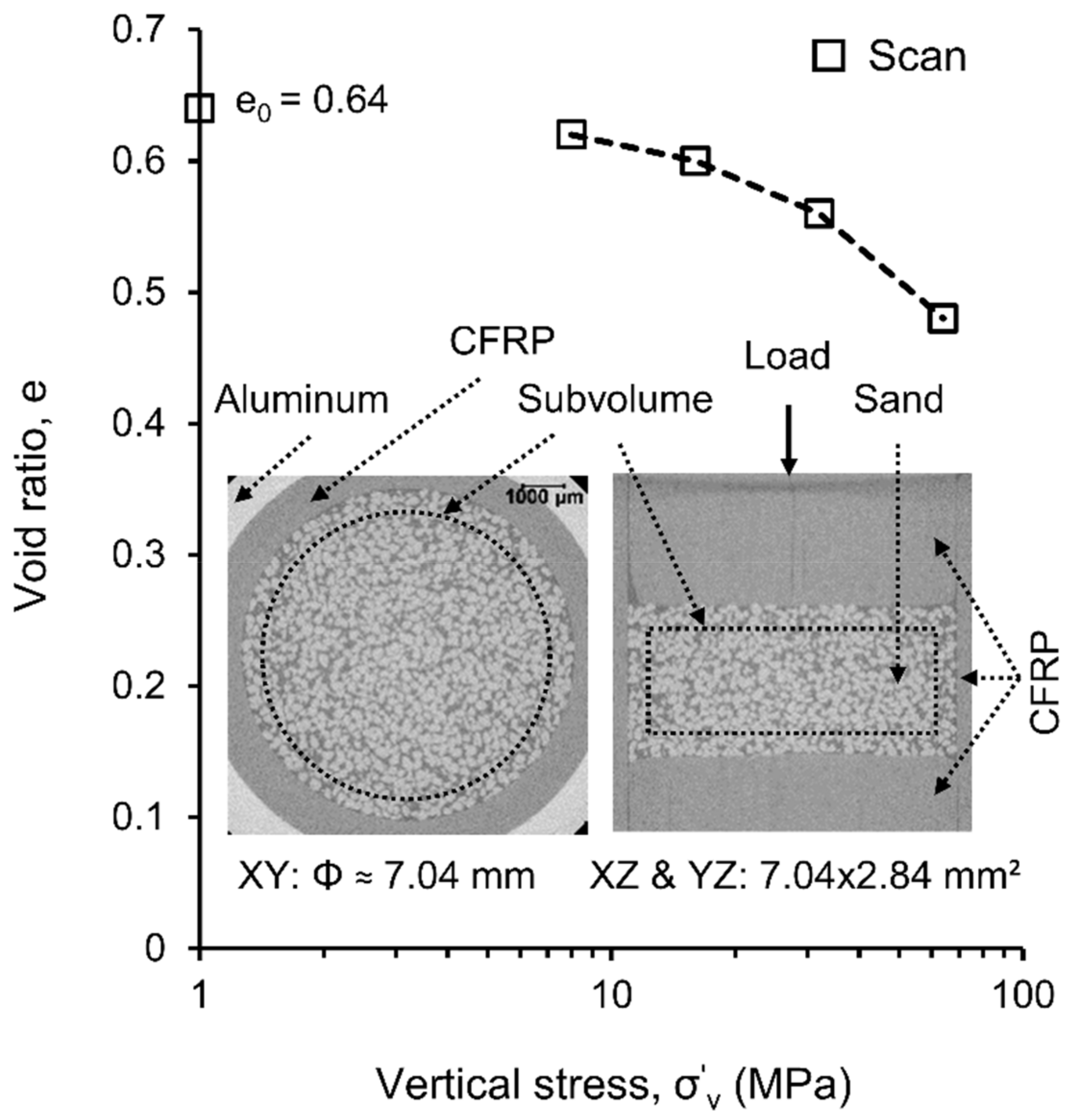
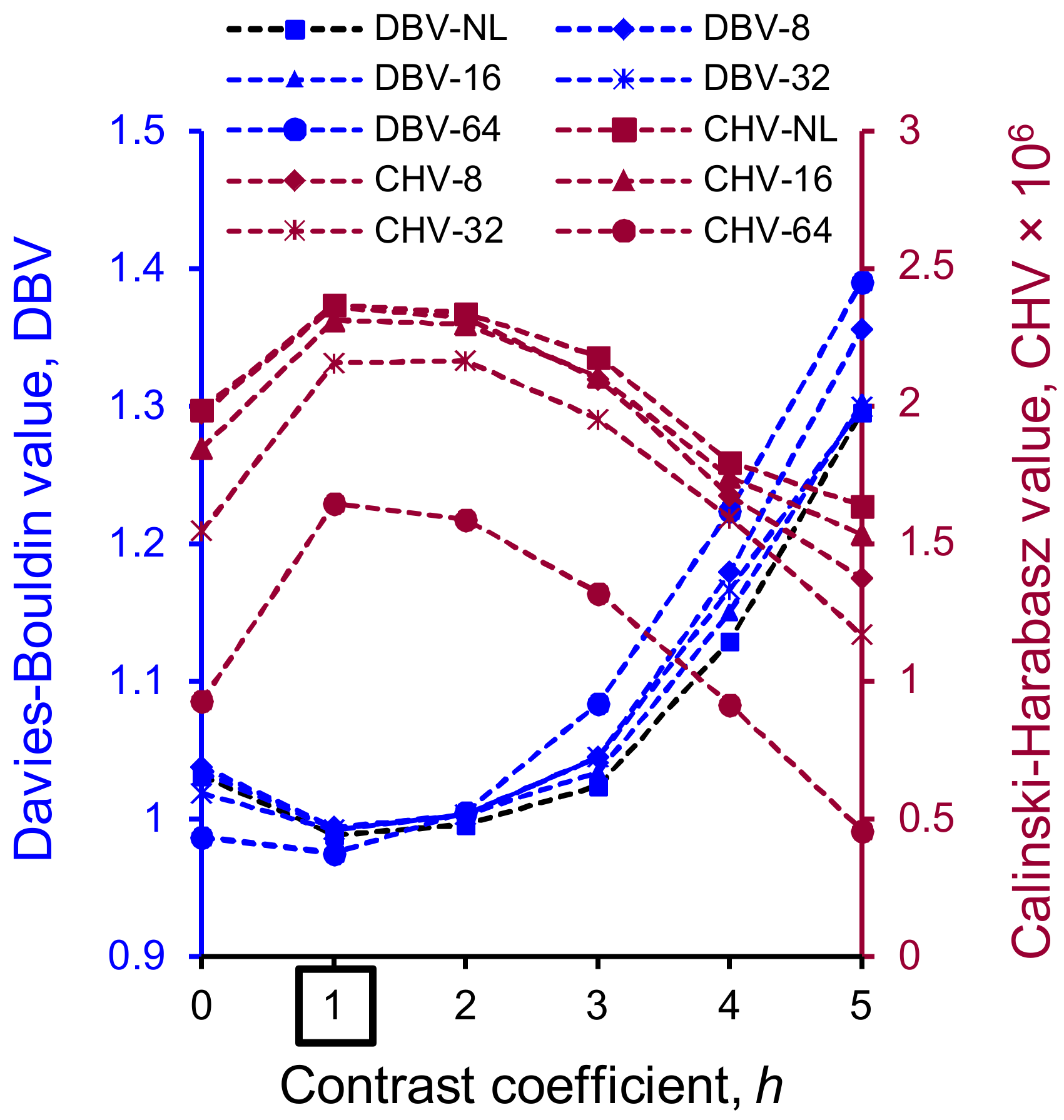

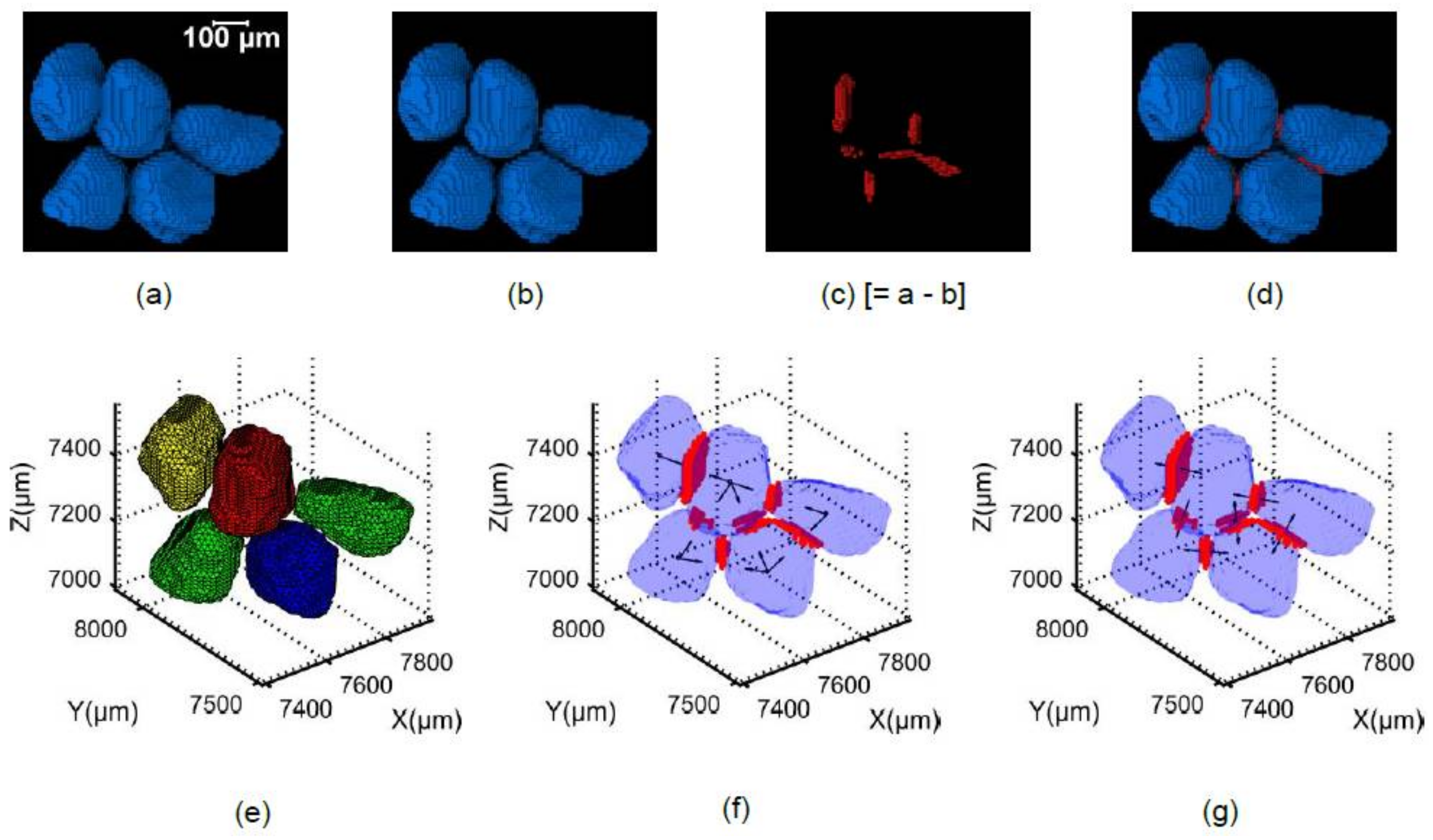
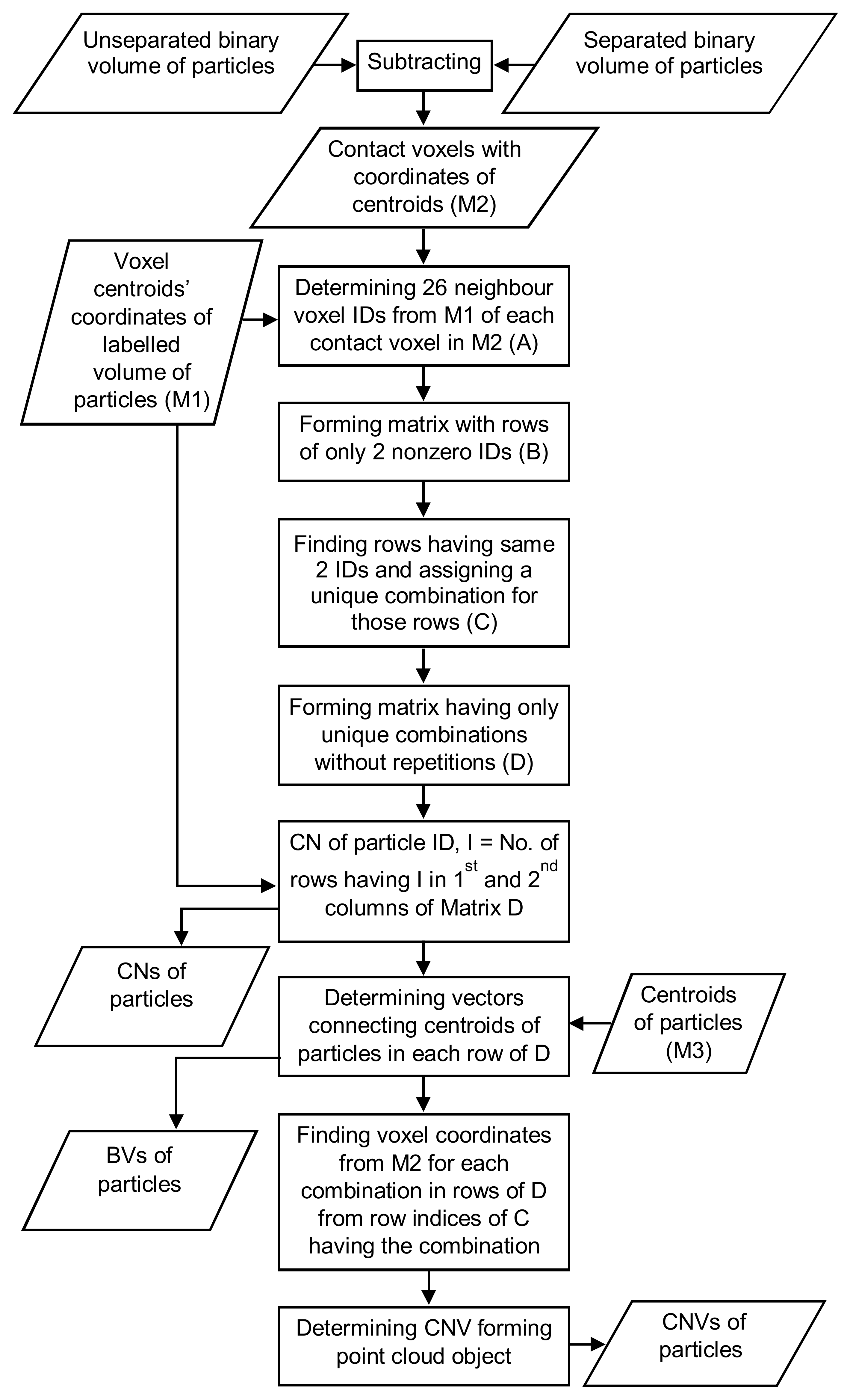


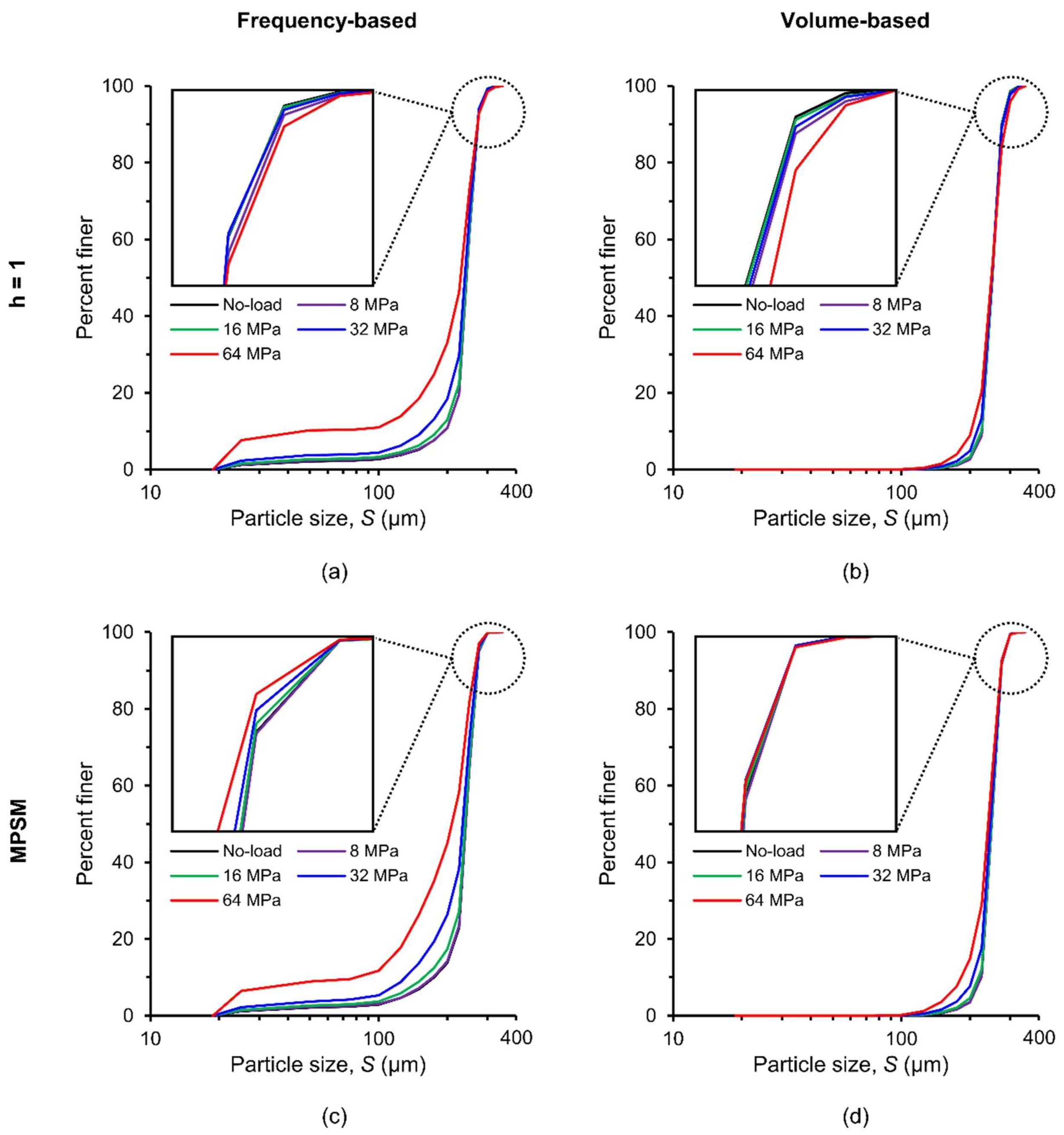

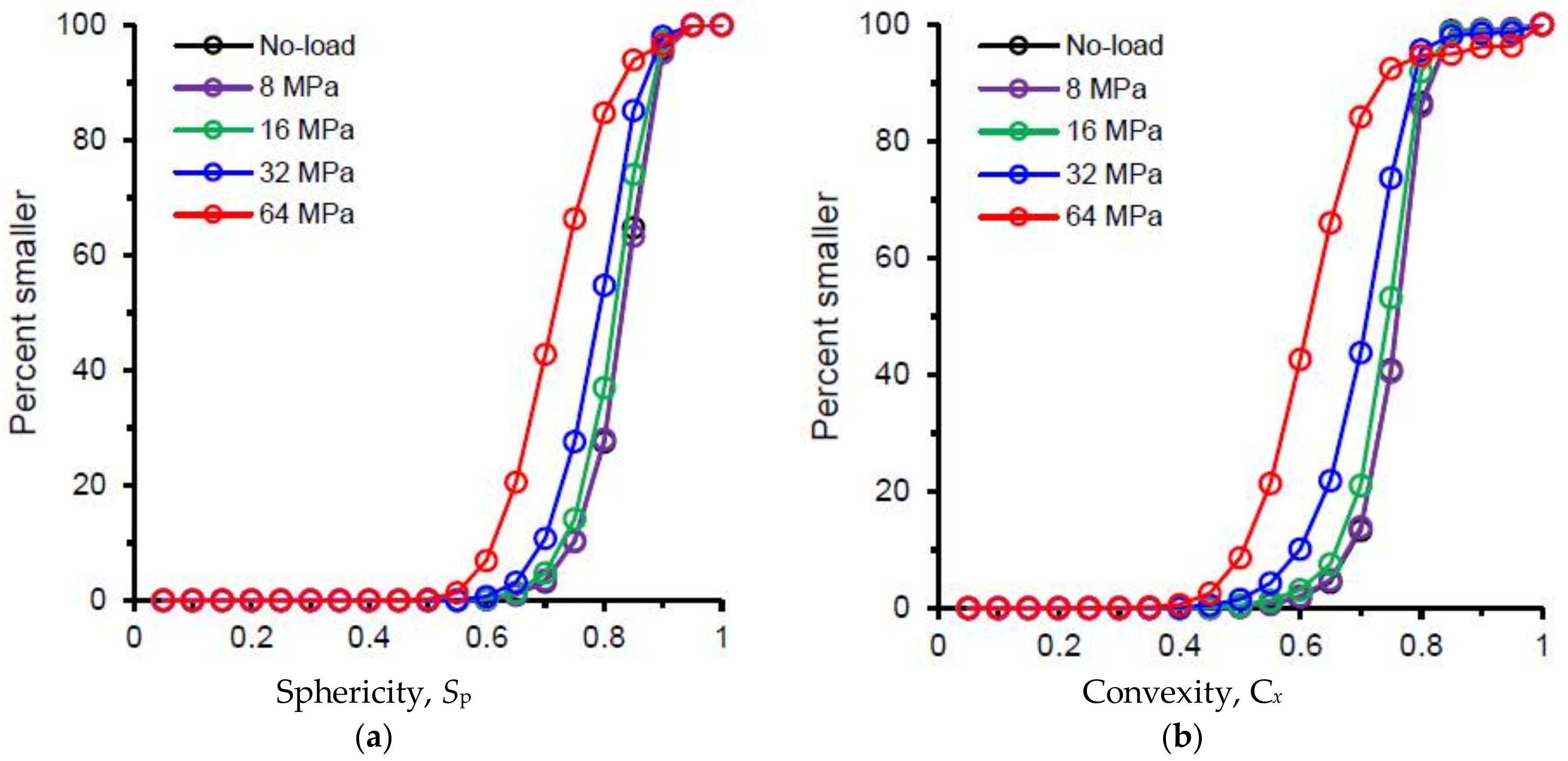
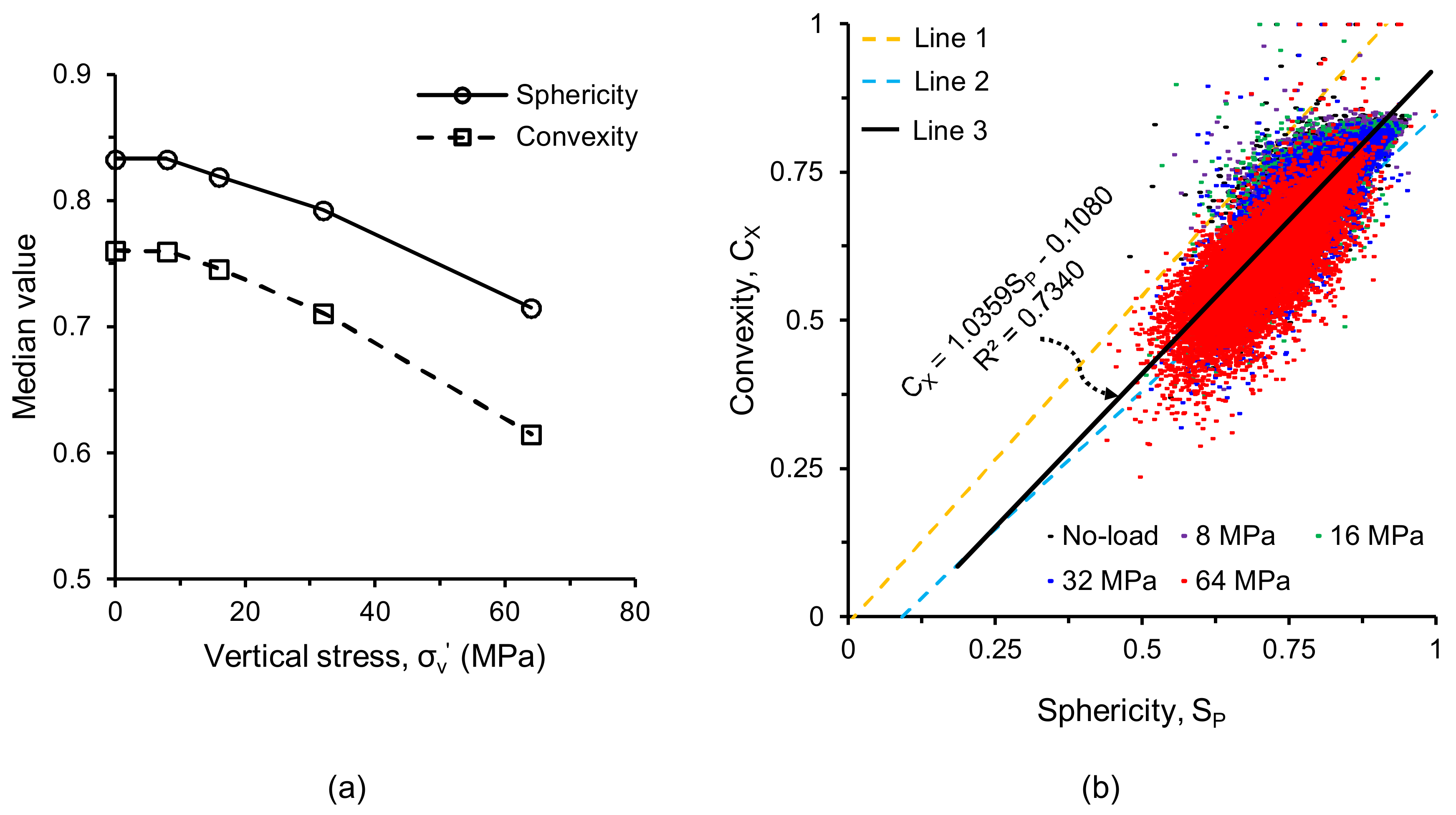


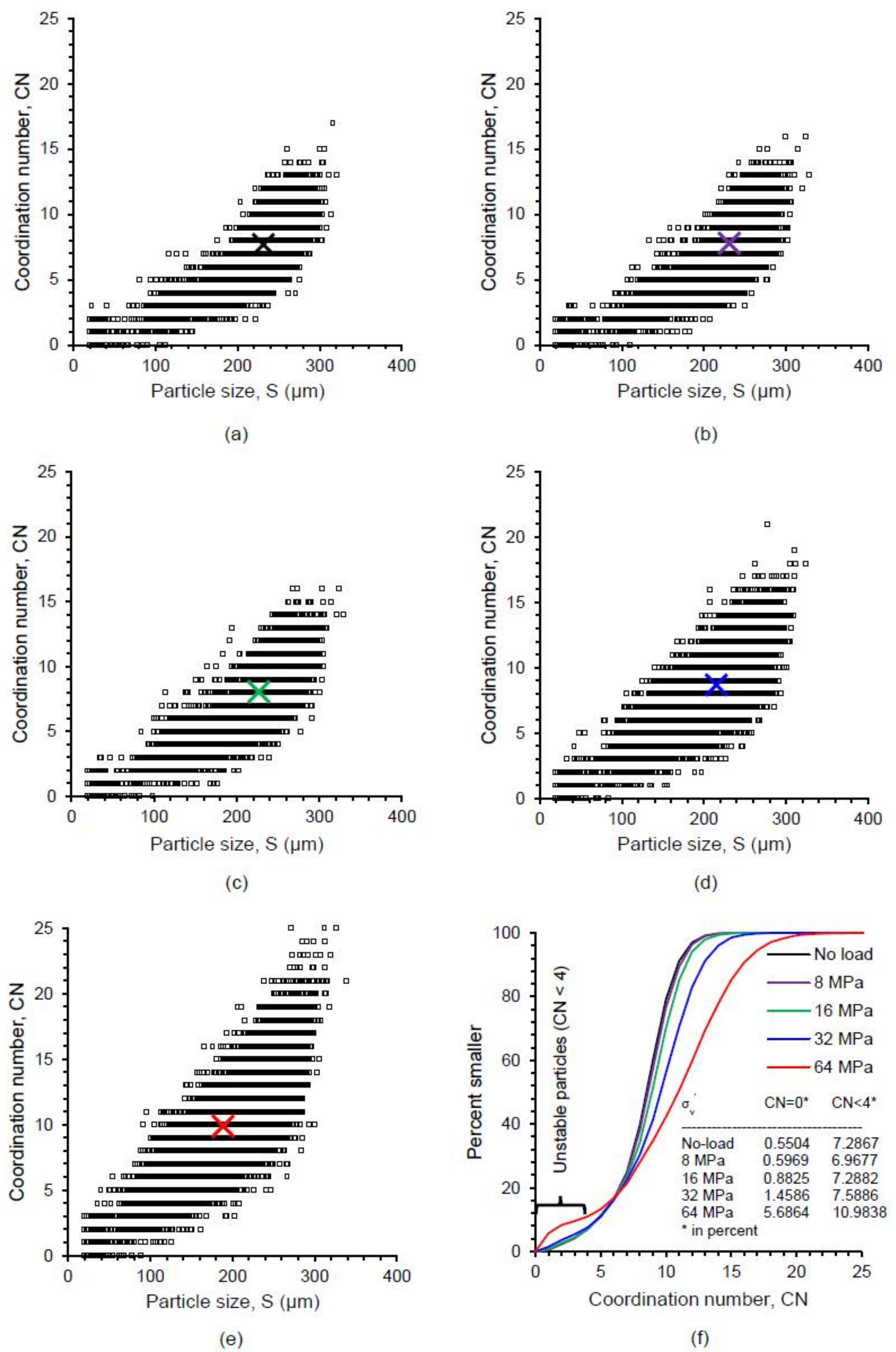
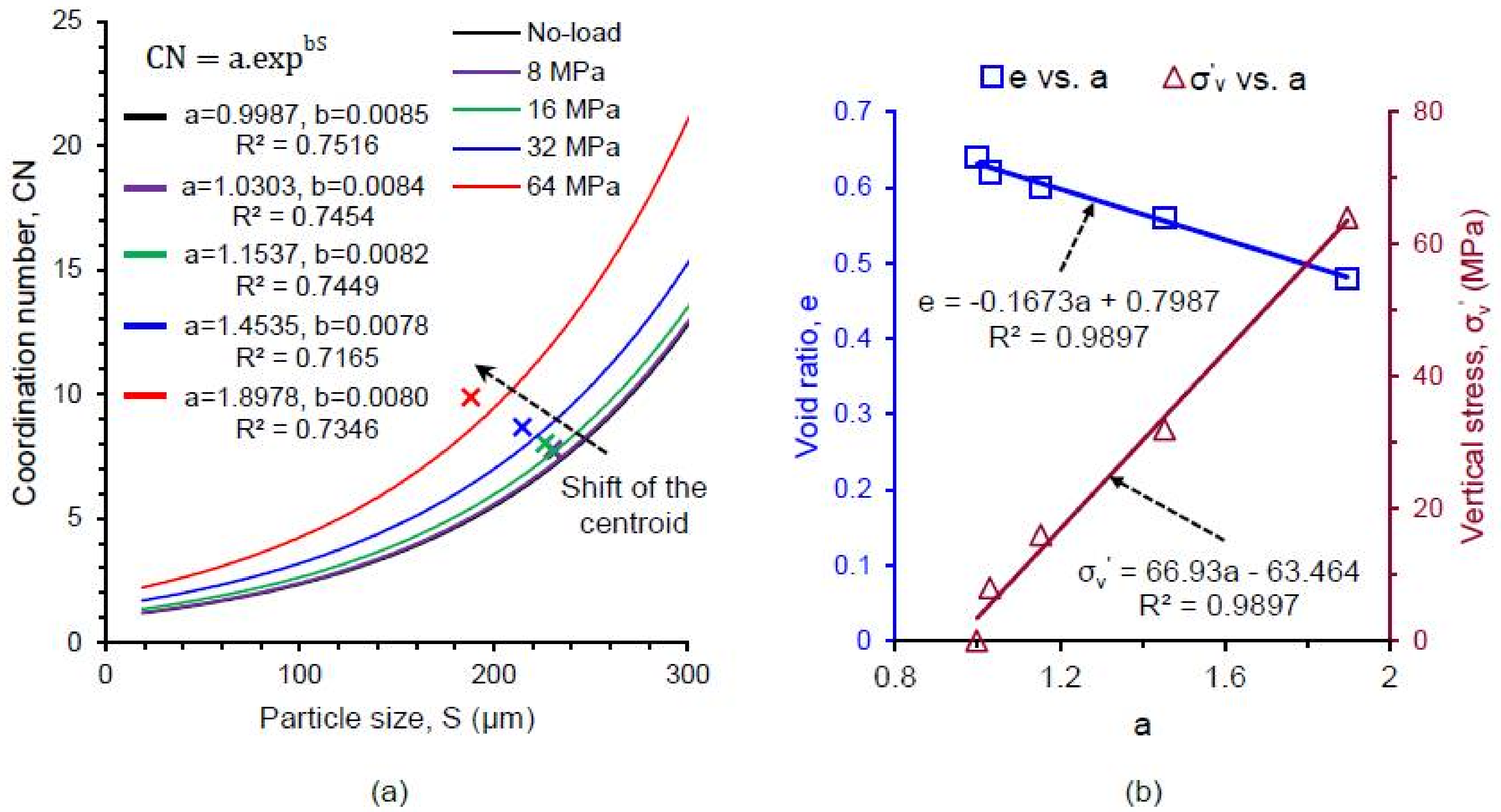
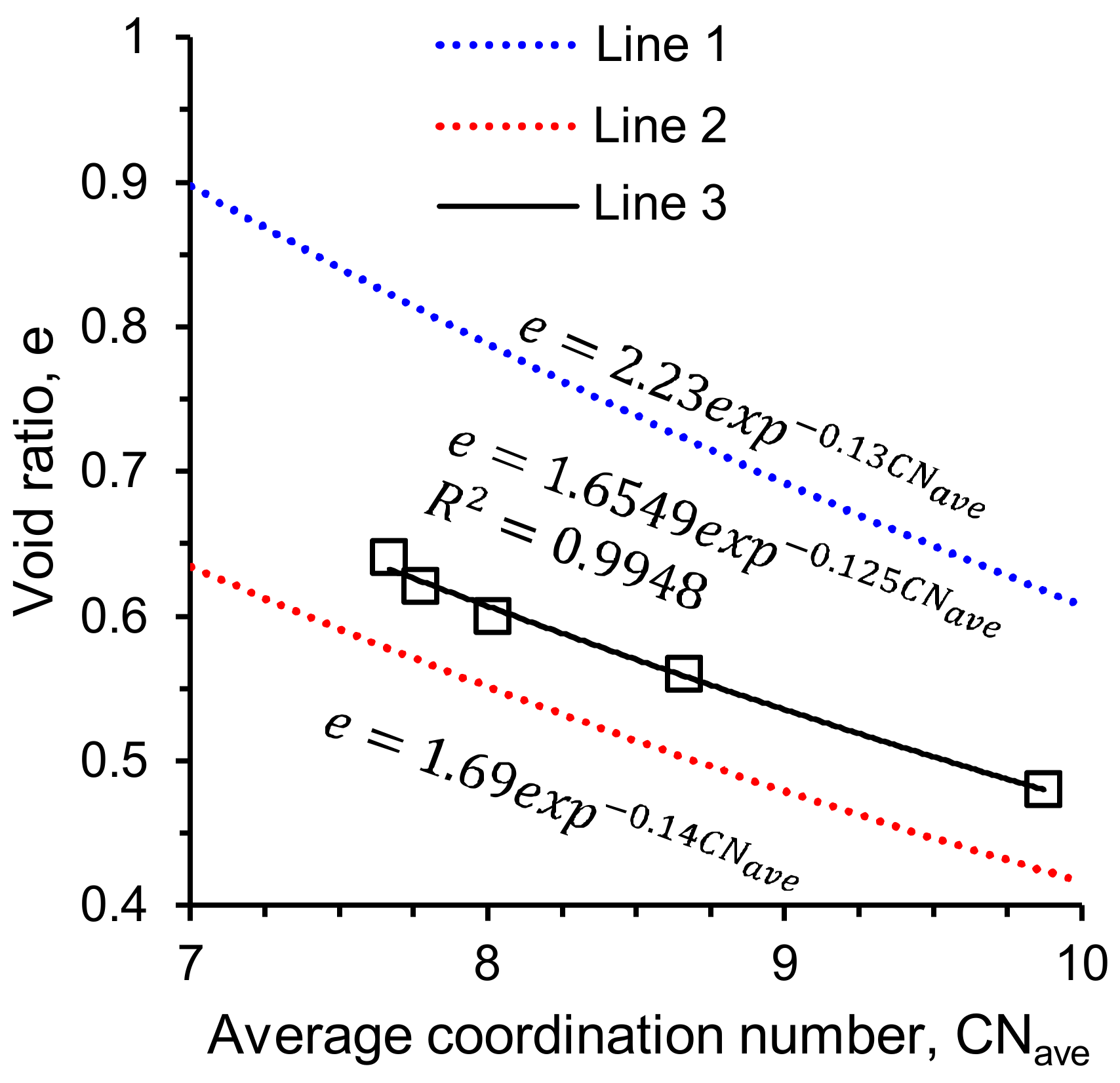

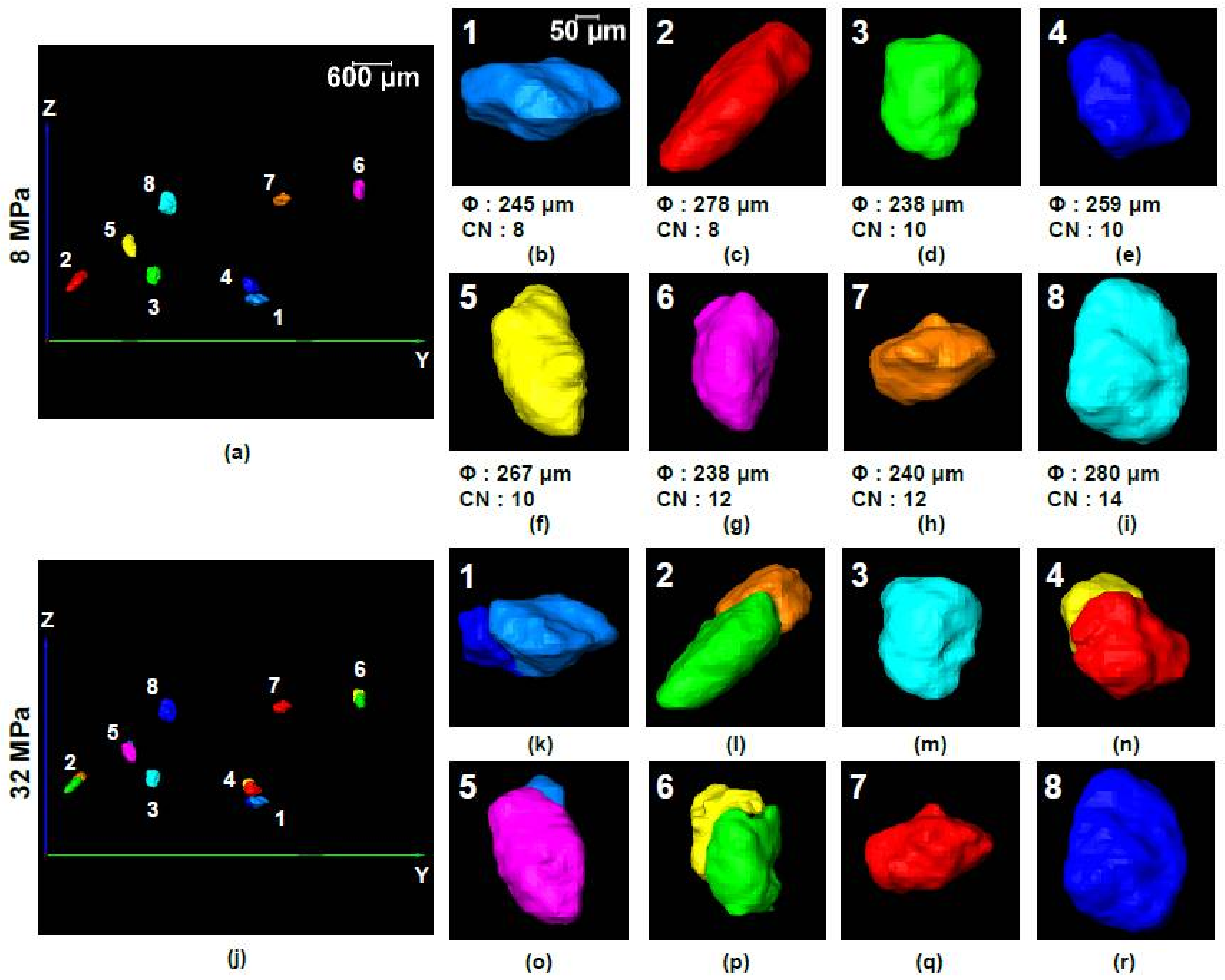

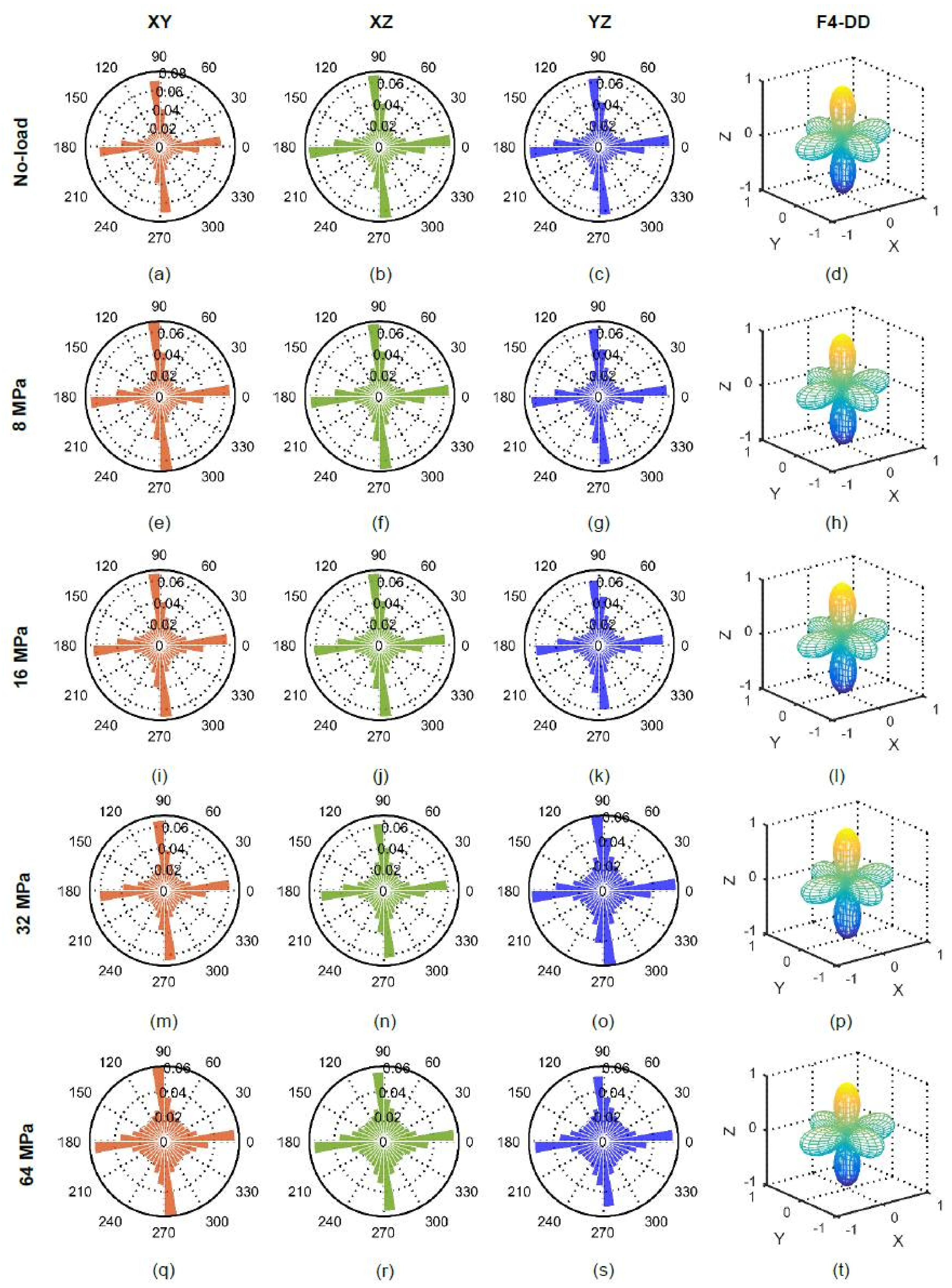
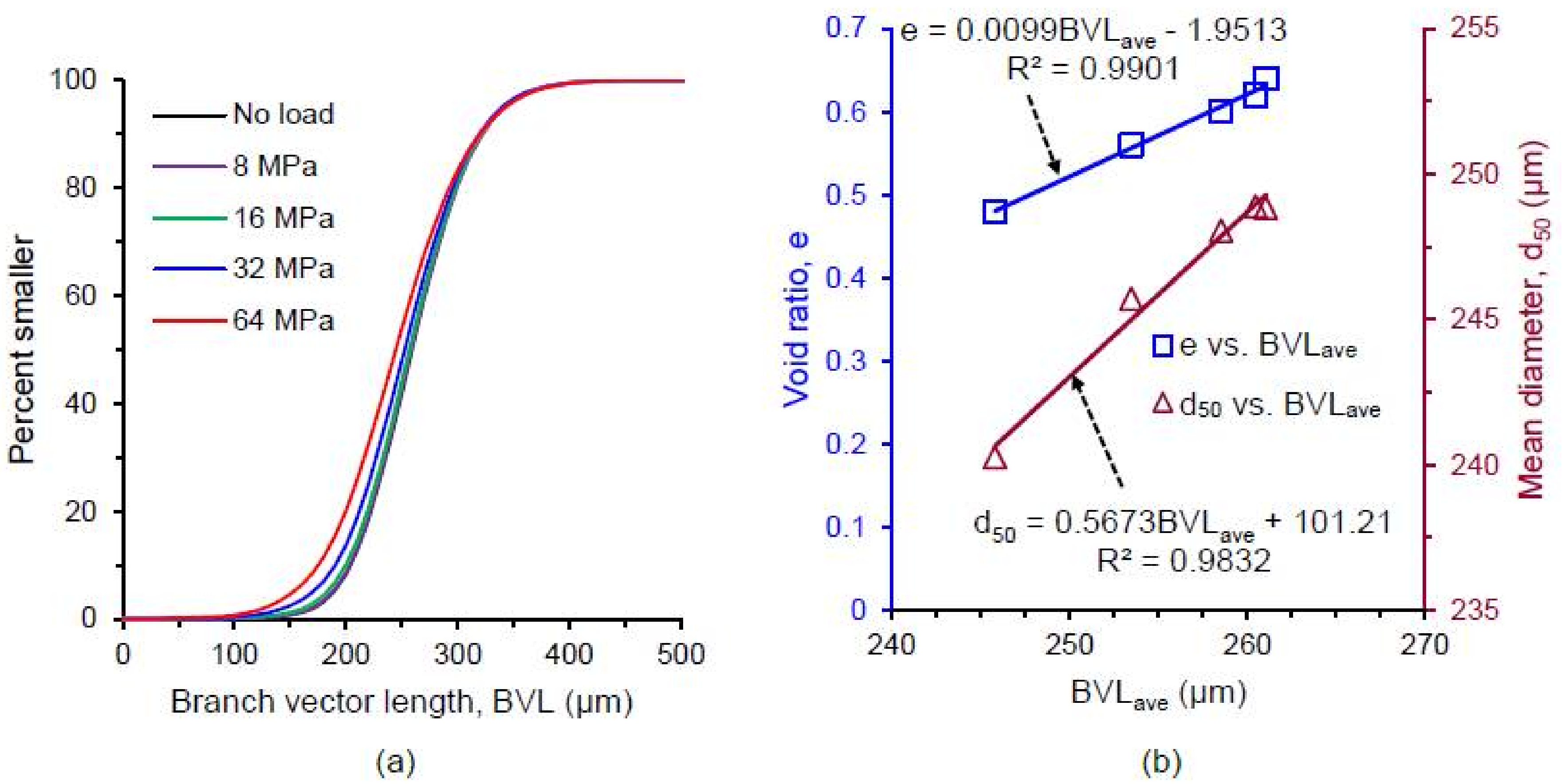
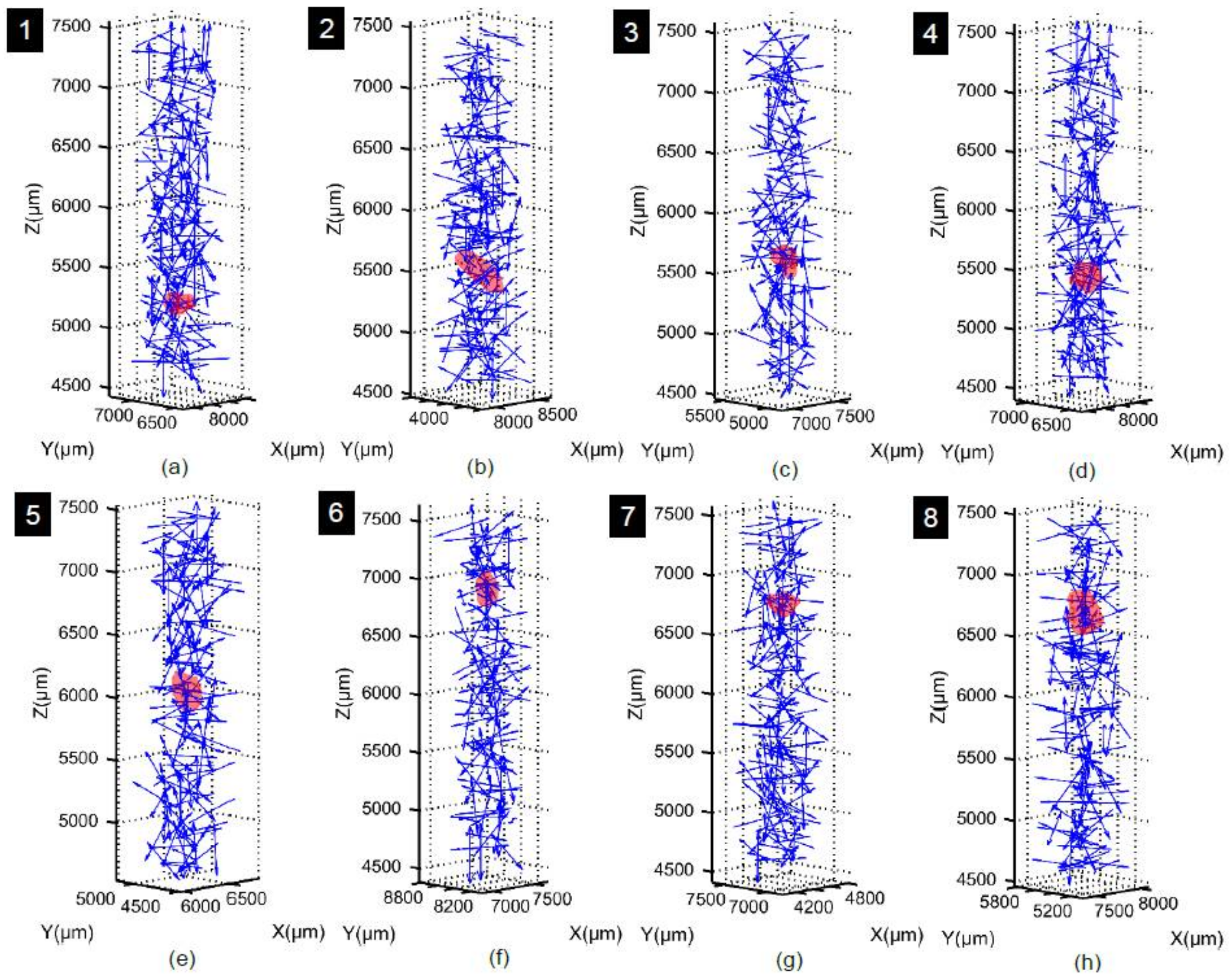
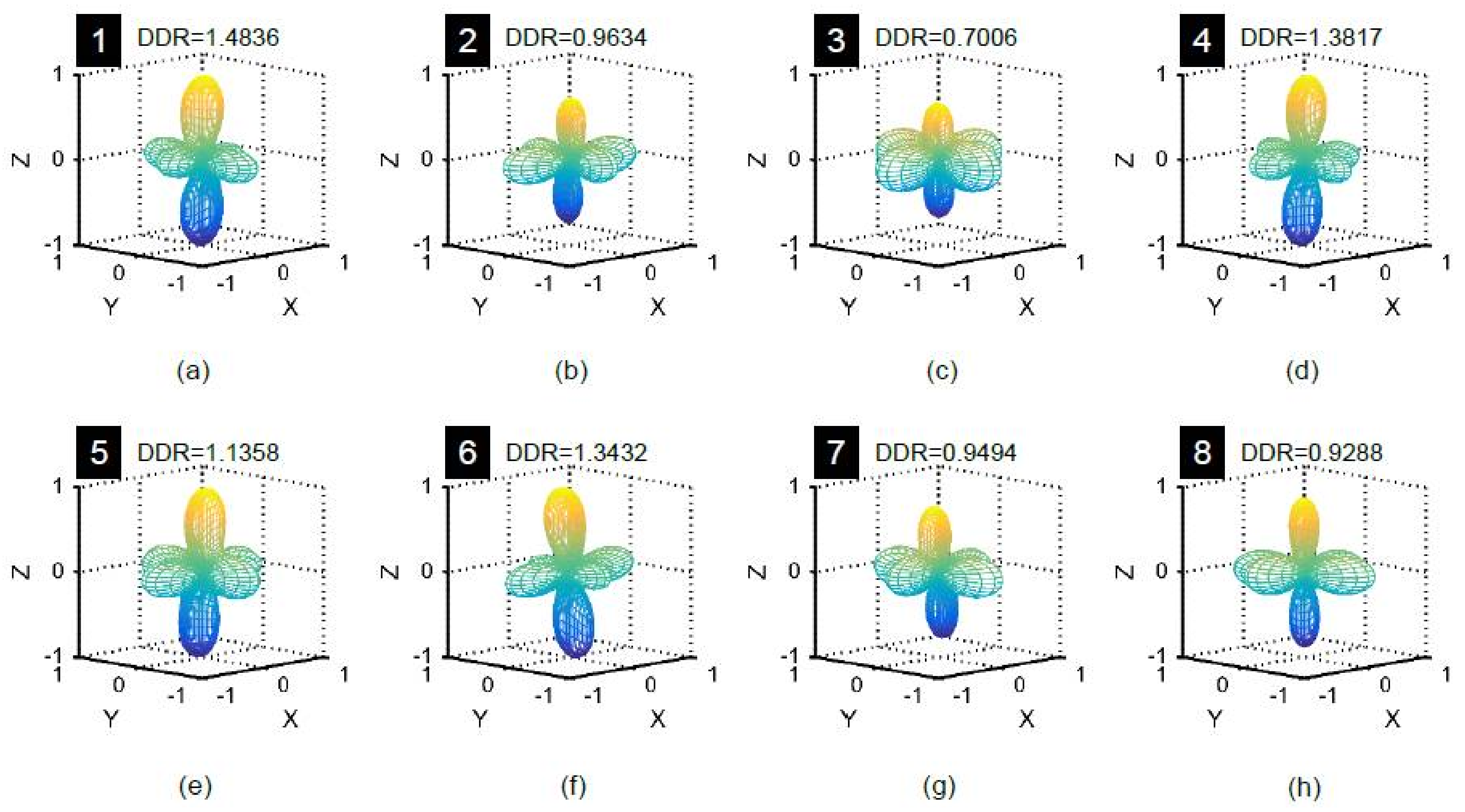
© 2018 by the authors. Licensee MDPI, Basel, Switzerland. This article is an open access article distributed under the terms and conditions of the Creative Commons Attribution (CC BY) license (http://creativecommons.org/licenses/by/4.0/).
Share and Cite
Alam, M.F.; Haque, A.; Ranjith, P.G. A Study of the Particle-Level Fabric and Morphology of Granular Soils under One-Dimensional Compression Using Insitu X-ray CT Imaging. Materials 2018, 11, 919. https://doi.org/10.3390/ma11060919
Alam MF, Haque A, Ranjith PG. A Study of the Particle-Level Fabric and Morphology of Granular Soils under One-Dimensional Compression Using Insitu X-ray CT Imaging. Materials. 2018; 11(6):919. https://doi.org/10.3390/ma11060919
Chicago/Turabian StyleAlam, Md Ferdous, Asadul Haque, and Pathegama Gamage Ranjith. 2018. "A Study of the Particle-Level Fabric and Morphology of Granular Soils under One-Dimensional Compression Using Insitu X-ray CT Imaging" Materials 11, no. 6: 919. https://doi.org/10.3390/ma11060919




